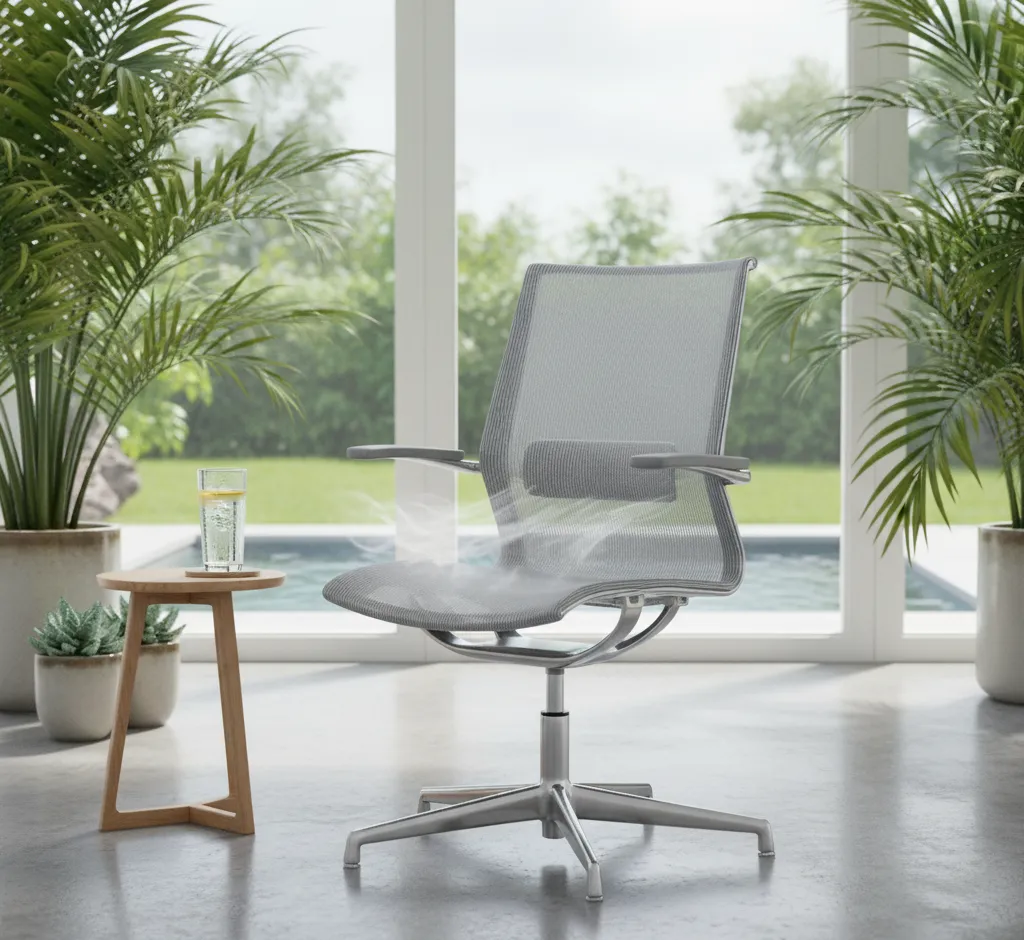The Ultimate Guide to Testing Chair Comfort Before You Buy: 7 Crucial Steps
Don't buy a chair based on looks alone. Follow this ultimate 7-step guide to rigorously test ergonomic comfort, lumbar support, cushion quality, and armrest height before purchasing an office or dining chair.

Introduction: Why Chair Comfort is Non-Negotiable
Choosing the right chair, whether it's for your home office, dining room, or living space, is one of the most critical decisions you'll make for your long-term health and productivity. The average person spends thousands of hours seated each year. A comfortable chair isn't a luxury; it's an investment in your well-being, posture, and focus. An ill-fitting or uncomfortable chair can lead to chronic back pain, neck strain, and a significant dip in concentration.
In the age of online shopping, it's easy to be swayed by aesthetics and price tags. However, the true test of a chair comes down to how it feels. This ultimate guide will walk you through seven crucial, practical steps—covering everything from the initial sit-down to long-term ergonomic checks—to help you thoroughly test and evaluate a chair's comfort before you commit to buying it. Stop guessing and start assessing like a pro.
1. The Initial Sit-Down: The 'First 15 Seconds' Test
The Immediate Impression (The Cushion Test)
The first point of contact is the seat cushion. Don't rush this moment. When you first sit down, pay attention to the initial sensation. Is the cushion:
- Too Soft? If you sink straight through and feel the base, it will offer no support and cause pressure points over time.
- Too Hard? If it feels like sitting on a plank, it will restrict blood flow and lead to numbness (the 'pins and needles' feeling).
- Just Right? The ideal cushion should provide **firm support** while still allowing for natural contouring of your body.
Checking for Immediate Pressure Points
Focus on areas where your body presses hardest against the chair:
- The Tailbone (Coccyx): Is there excessive pressure? This is a major cause of lower back pain.
- The Back of the Thighs: Does the front edge of the seat dig into the back of your knees? There should be a gap of about 2-4 fingers between the edge of the seat and the back of your knees.
2. Assessing Lumbar and Back Support
The backrest is where a chair either saves your spine or sabotages it. Proper lumbar support is key to maintaining the natural 'S' curve of your spine.
The Lumbar Curve Check
Your lower back (the lumbar region) should be gently supported by the chair's backrest. If the chair has an adjustable lumbar mechanism (common in high-end office chairs), take the time to move it up, down, in, and out. Find the sweet spot where you feel a gentle push that encourages your pelvis to remain upright, not slouch backward.
The Full Back Contact Test
Lean back naturally. Your entire back, from your shoulders down to your hips, should be in contact with the chair's backrest. A chair that forces you to hunch forward to read or work, or one that leaves a gap at your lower back, is an ergonomic failure.
3. Evaluating Armrests and Height
Armrests are often overlooked, but they are crucial for relieving shoulder and neck tension.
Armrest Positioning
When you're sitting with good posture, your forearms should be resting lightly on the armrests, and your shoulders should be relaxed, not shrugged up. If the armrests are too high, they push your shoulders up. If they are too low, you slump to reach them.
- Office Chairs: Test the adjustability. They should allow your arms to be parallel to the floor.
- Lounge/Dining Chairs: Ensure they are not so high that they prevent you from pulling the chair in close to a table or desk.
Seat Height and Foot Placement
Adjust the seat height (if possible) until your feet are flat on the floor and your knees are at a 90-degree angle, or slightly lower than your hips. This is the foundation of good seated posture. If the chair is non-adjustable (like a dining chair) and your feet dangle, it is not a good fit for you.
4. The 'Long-Haul' Simulation (The 10-Minute Test)
A chair can feel great for 30 seconds, but can it last for hours? If you are testing in a store, ask if you can sit in the chair for at least 10 minutes. Read a book, check your phone, or simply relax your body. This simulation will quickly reveal hidden flaws:
- Do pressure points start to emerge?
- Does your lower back begin to ache?
- Do you start to fidget, which is a tell-tale sign of poor comfort?
5. Movement and Adjustability Checks
For office and task chairs, movement is an essential feature of comfort, as the best posture is the next posture.
Recline and Tilt Mechanisms
Test the full range of recline. Does the backrest move smoothly? Does the chair lock securely in various positions? A good recline function takes the pressure off your spine and allows for beneficial micro-breaks.
Swivel and Casters
If the chair swivels, ensure the movement is smooth and quiet. If it has casters (wheels), test them on the surface you'll be using the chair on (e.g., carpet vs. hard floor) to ensure easy, non-straining movement.
6. Material and Climate Considerations
The chair's upholstery plays a significant role in comfort, especially in terms of temperature regulation.
Breathability Test
In warm environments or for long sitting periods, non-breathable materials like certain vinyls or thick leathers can cause heat and moisture build-up (the dreaded 'chair sweat'). Mesh and high-quality, breathable fabrics are often superior for all-day comfort, providing necessary ventilation.
Texture and Feel
Run your hand over the material. Is it scratchy, sticky, or smooth? Consider how it will feel against bare skin in warmer months. The material should be inviting, not irritating.
7. Final Comfort Checklist: The Buyer’s Protocol
Before leaving the store or clicking 'buy,' run through this quick mental checklist to confirm total comfort:
The 5-Point Comfort Protocol
- Feet: Are they flat on the floor with knees at $\approx 90^{\circ}$?
- Lower Back: Is the natural curve supported without pain?
- Shoulders: Are they relaxed and resting on the armrests (if applicable) without shrugging?
- Thighs: Is there a small gap between the front of the seat and the back of your knees?
- Overall: Do you feel relaxed and balanced, not forced into a position?
Conclusion: Sit Smarter, Not Harder
A chair is more than just a piece of furniture; it is the silent partner in your daily routine. By following these seven detailed steps, you move beyond subjective 'feelings' and apply a systematic, ergonomic approach to testing comfort. A minute spent testing today can save you months of pain and discomfort tomorrow. Commit to a thorough evaluation, and you will find the perfect chair—the one that supports your body, enhances your posture, and makes every seated hour a productive, pain-free one.

